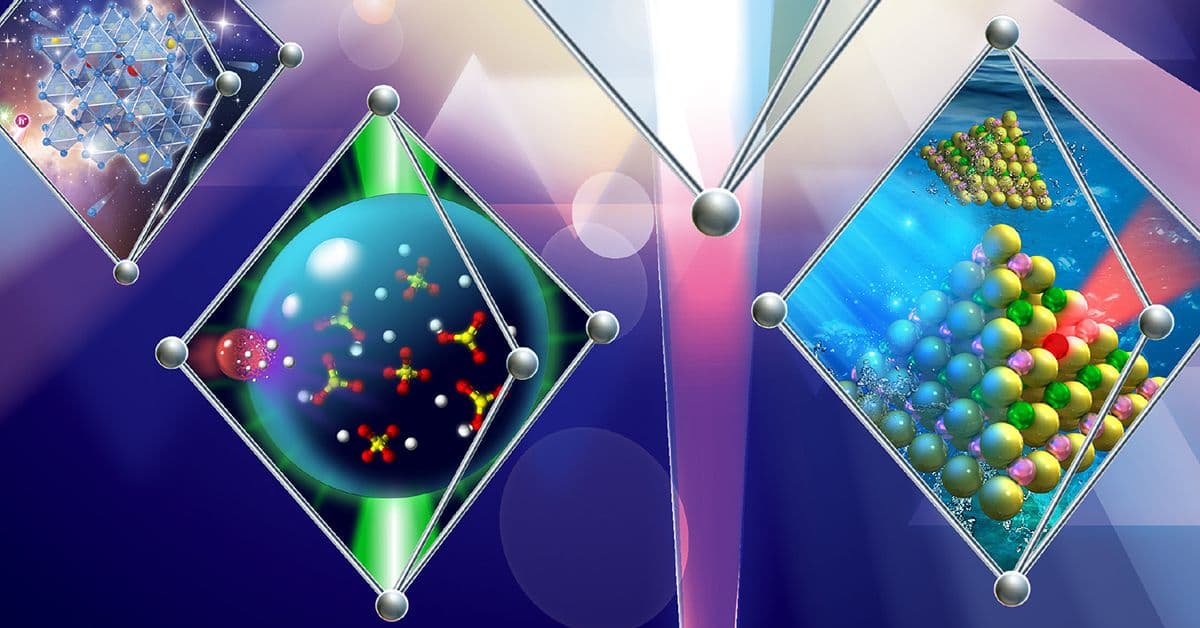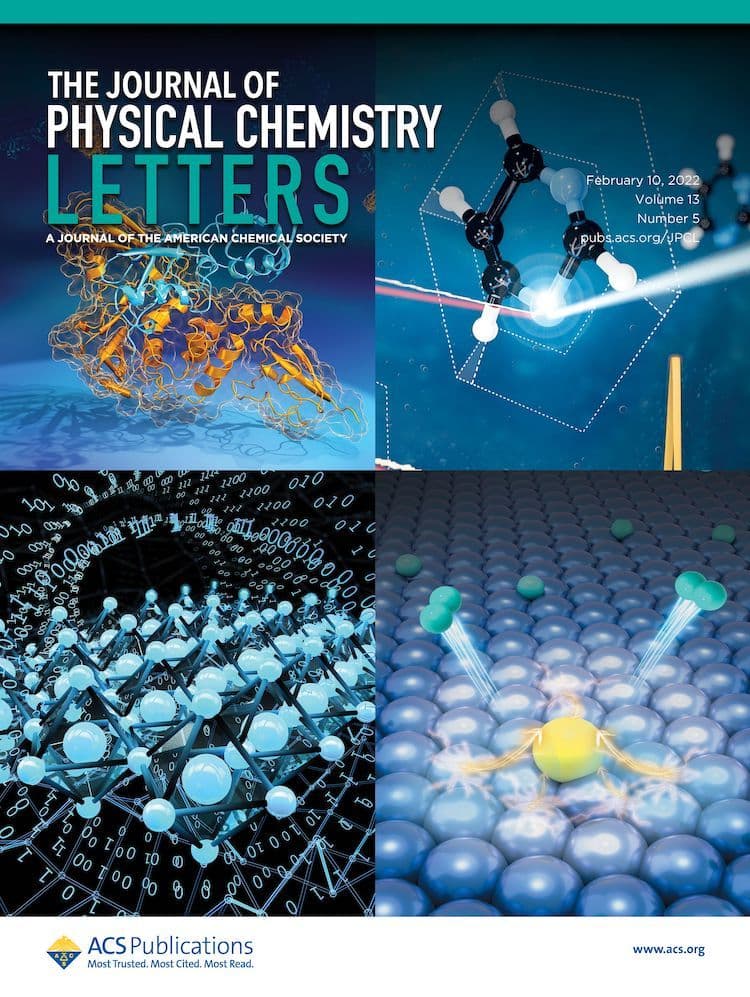The Journal of Physical Chemistry Letters has introduced a new editorial framework to better support its global authors, with the introduction of four new Executive Editors. Once a manuscript has been submitted, it enters a screening process where three Executive Editors screen manuscripts from their geographic area: Jin Z. Zhang, University of California, Santa Cruz: […]

Once a manuscript has been submitted, it enters a screening process where three Executive Editors screen manuscripts from their geographic area:
- Jin Z. Zhang, University of California, Santa Cruz: North America, South America, and Australia
- Juan Bisquert, Universitat Jaume I (Spain): Europe and Africa
- Haizheng Zhong, Beijing Institute of Technology (China): Asia
In addition, theory/computational manuscripts are screened by Oleg V. Prezhdo of the University of Southern California. Each Executive Editor makes a recommendation and the manuscript is either sent to one of the journal’s Senior Editors or the Editor-in-Chief for a second screening.
By implementing this workflow, nearly every manuscript submitted to The Journal of Physical Chemistry Letters is screened by at least two, and sometimes three, editors before a First Decision is made.
As well as this rigorous screening process, authors publishing with The Journal of Physical Chemistry Letters still benefit from the journal’s exceptional speed, allowing them to publish their research rapidly. Between January and April 2020:
- Average Submission to First Decision: 2.2 weeks
- Average Submission to Acceptance: 5.9 weeks
- Average Submission to ASAP: 6.9 weeks
I recently spoke to The Journal of Physical Chemistry Letters Editor-in-Chief, Professor Gregory Scholes, about the value of a clearly defined and fair workflow process for authors, his plans to make the journal’s Editors champions for authors, rather than gatekeepers of the journal.
“Our new workflow means that each manuscript submitted is examined carefully by at least two editors. In the first round, a manuscript is rated for urgency and significance in the field—as well as in the context of the global region. We realize that there are different specialties and research priorities in, e.g. Europe compared to North America, and we try to capture this heterogeneity in the papers we publish. In the second round, a specialist editor or the Editor-in-Chief examines the paper and makes a final decision. Overall our goal is to look for the most excellent papers in physical chemistry,” says Professor Scholes.
I spoke with some of the Executive Editors to learn more about some of the exciting papers that they have recently handled, and what they would like to see in the future.
Jin Z. Zhang, University of California, Santa Cruz
Which current exciting developments would you like to see published in The Journal of Physical Chemistry Letters?
I would like to see more experimental work on quantum materials published in The Journal of Physical Chemistry Letters. Quantum materials generally refer to materials that exhibit strong electronic correlations and/or electronic order (such as superconducting or magnetic order), systems with non-generic quantum effects (e.g. topological insulators and Dirac electron systems), or materials with collective properties that are genuinely quantum in nature, such as ultra-cold atoms, cold excitons, and polaritons.
Quantum materials are urgently needed for quantum information technology including quantum computing (qubits) and data storage. To date, there have been more theoretical/computational work in this area published in The Journal of Physical Chemistry Letters, and I would like to see more experimental work in this area that provides new physical insights published in the journal.
Is there a recent article that you handled, that you found particularly interesting? Why?
Room-Temperature Defect Qubits in Ultrasmall Nanocrystals
J. Phys. Chem. Lett. 2020, 11, 5, 1675–1681
DOI: 10.1021/acs.jpclett.0c00052
Nanocrystals have many unique physical and chemical properties for many emerging applications including quantum information technology. To date, the preparation of qubits at the nanoscale has been challenging.
In this work, the authors demonstrate a synthesis method that avoids any interaction of the solid with high-energy particles and uses self-propagated high-temperature synthesis with a subsequent electrochemical method, the no-photon exciton generation chemistry to produce room-temperature qubits in ultrasmall nanocrystals of sizes down to 3 nm with high yield. They first create the host silicon carbide (SiC) crystallites by high-temperature synthesis and then apply wet chemical etching to generate ultrasmall SiC nanocrystals and create thermally stable defect qubits. They demonstrate room-temperature optically detected magnetic resonance signal of divacancy qubits with 3.5% contrast with emission wavelengths falling in the second biological window (1000−1380 nm) of interest in biomedical technology. The authors also used a combination of ESR and PL spectroscopy to gain insight into the nature of defect transformation in these materials that is essential for creating the divacancy defect qubits.
These materials have potential applications in biomedicine (e.g. quantum sensing) as well as telecommunication (e.g. quantum information processing and storage) applications.
Oleg V. Prezhdo, University of Southern California
Which current exciting developments would you like to see published in The Journal of Physical Chemistry Letters?
General areas I would like to see more of in The Journal of Physical Chemistry Letters include energy/catalysis, quantum materials, and information, and machine learning. Energy and catalysis is generally a very active field. Quantum materials and information is a challenging field, especially experimentally, but also theoretically. Whilst it is not so big now, it is definitely growing.
Machine learning (ML) is a huge computational field that spans all areas of science, including physical chemistry. ML is intrinsically a computational area, though the input can come both from other computations and experiments.
Generally, there are two types of ML, unsupervised, which is usually used to analyze data with the expectation to gain novel insights and obtain non-obvious correlations, and supervised, used to develop molecular dynamics force fields or density functional theory functionals. The following are examples of recent ML papers that I have recently handled.
Methods development I’m interested in include: design of DFT functionals, simulation of excited-state dynamics, determination of reaction coordinates, coarse-graining of interactions of biological systems, prediction of reaction rate constants, prediction of bandgap and exciton binding in materials, prediction of surface-enhanced Raman spectra (SERS).
Applications I’m interested in include: design of metallic particle electrocatalysts for oxygen reduction, the discovery of 2D photovoltaic materials, design of metal hydrides for hydrogen storage, prediction of 2D electrocatalysts for hydrogen evolution.
I would like to see more of these types of papers in The Journal of Physical Chemistry Letters.
Is there a recent article that you handled, that you found particularly interesting? Why?
Data-Driven Collective Variables for Enhanced Sampling
J. Phys. Chem. Lett. 2020, 11, 8, 2998–3004
DOI: 10.1021/acs.jpclett.0c00535
This is one of the many current applications of ML in chemistry. The manuscript stands out for several reasons. It focuses on the general problem of finding a collective variable that can describe the evolution of chemical reactions. This problem arises in essentially all fields of chemistry. It develops (or makes progress towards) a new technique that can be used in all these fields.
It illustrates the method with a couple of typical reactions that can be easily appreciated by chemists from different fields. It is written clearly, and objectively discusses the strengths and difficulties of the technique. It comes from a well-known group (Parrinello) with a long history of excellent work, while at the same time, it describes a new, original research direction.
Juan Bisquert, Universitat Jaume I
Which current exciting developments would you like to see published in The Journal of Physical Chemistry Letters?
The journal has an important record of influential publications in the field of fundamental aspects of advanced materials for clean energy. An important new development in this area is the rapid expansion of additive manufacturing techniques such as 3D printing. These methods are gaining increasing popularity for their great versatility and potential to address specific needs in minimal response time, as it has been widely recognized in the coronavirus crisis.
Different fields of advanced materials are exploring the realization of nanomaterials, quantum dots and organic devices using these resources, for example, there have been organized some online meetings like Nanocrystals in Additive Manufacturing and Advanced Materials for Next Generation 3D Printing. These advances allow a direct translation of novel or emerging properties at the molecular or nano-sized level to macroscopic devices with the functionality dictated by the designer.
A thorough understanding of the fundamental physicochemical properties of materials and formulations developed for additive manufacturing and their translation into macroscopic properties is essential to drive the development of new products and processes and provides ample room for publication in The Journal of Physical Chemistry Letters.
Is there a recent article that you handled, that you found particularly interesting? Why?
Collective Rayleigh Scattering from Molecular Ensembles under Strong Coupling
J. Phys. Chem. Lett. 2020, 11, 10, 3803–3808
DOI: 10.1021/acs.jpclett.0c01012
The authors demonstrate for the first time that scattering is greatly enhanced in the collective strong coupling of excitons to a cavity mode. It is an extremely important finding in the rapidly expanding field of material and molecular properties under strong coupling.
The paper was praised by the referees for the originality and significance. They indicated that this is the first study in this direction. It provides new insight into the underlying physics of the collective states and it can be very useful for other groups working in this area to interpret their data. It more generally shows to the broader community that even something as basic as scattering can be modified in a cavity. The skillful presentation of evidence and conclusions is also remarkable.
The paper is well written and easy to read. The data is clean with all the necessary controls. Following my recommendation, it was featured in ACS Editors’ Choice which gave ample diffusion and impact to the paper.
Haizheng Zhong, Beijing Institute of Technology
Which current exciting developments would you like to see published in The Journal of Physical Chemistry Letters?
Semiconductor materials are key components to support the rapid developments of the information society. Motivated by the great demand for flexible electronics, a large number of solution process semiconductors including organic semiconductors, colloidal quantum dots, and perovskites have been discovered and developed. Very recently, tremendous steps have been made in the field of solution-processed optoelectronics. OLED screens are now utilized in mobile phones. Quantum dots have also been successfully incorporated into TV technology for achieving better color quality. The performance of organic and perovskite-based solar cells has also increased dramatically.
The understanding of these solution-processed optoelectronics not only provides the opportunity to establish new theory but also generates guidelines to optimize the device’s performance, in particular stability issues. The physical insights into the materials, devices, and processes involved are impressive.
In my opinion, I want to see advanced techniques for materials and device characterizations, new theoretical models to correlate the materials and properties, and potential influence on the environment and human science.
I would like to see more of these types of papers in The Journal of Physical Chemistry Letters.
Is there a recent article that you handled, that you found particularly interesting? Why?
Pb-Based Perovskite Solar Cells and the Underlying Pollution behind Clean Energy: Dynamic Leaching of Toxic Substances from Discarded Perovskite Solar Cells
J. Phys. Chem. Lett. 2020, 11, 8, 2812–2817
DOI: 10.1021/acs.jpclett.0c00503
Perovskite solar cells have been well developed as low-cost alternatives to photovoltaic technique, however, the commercialization was halted by instability and environmental concerns. In this Viewpoint, the authors estimated the potential effects of Pb and organic pollutants if perovskite solar cells are discarded. The discarded perovskite solar cells are expected to release Pb when subjected to water, rain, and landfill leachate. Importantly, the Pb concentration exceeds the hazardous waste limit. This work provides experimental results to evaluate the environmental concerns of lead leakage and organic compound pollutants. I think it will evoke environmental considerations in addition to the concerns with the stability and degradation of perovskite solar cells and other solution-processed devices.
***
